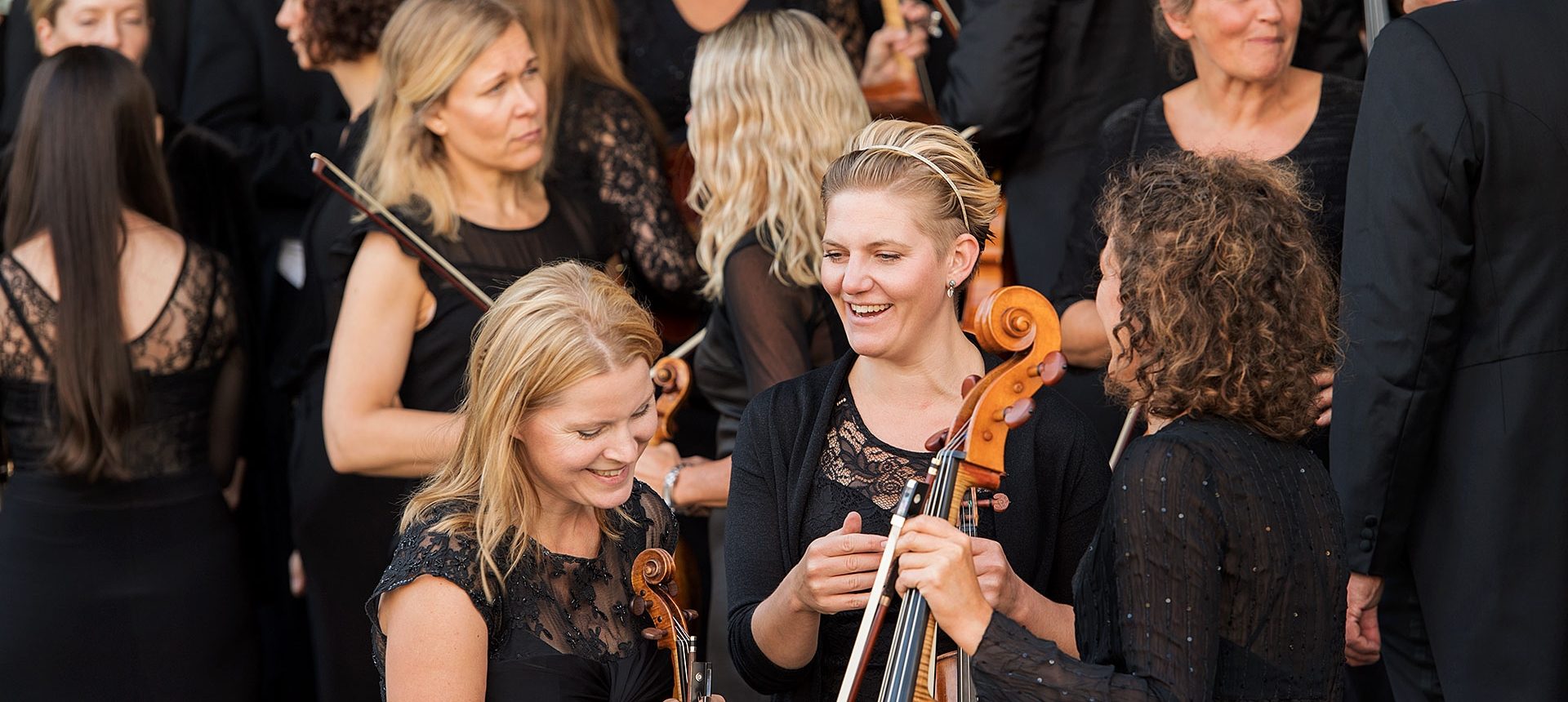Conductor
Stands in front of the orchestra and leads it. Is the one who is responsible for the rehearsals and decides how the music is played.
Voice tone
Before the concert begins, the oboist takes a tuning note, the note A. Everyone in the orchestra tunes their instruments to the same A and in this way it usually sounds better! It’s called intonation – when everyone plays exactly the same, it sounds pure.
Concertmaster
The violinist who sits at the far left of the conductor is the concertmaster. He or she acts as a link between conductor and orchestra and all the violinists always try to play just like the concertmaster.
Symphony
A longer orchestral work with several parts is usually called a symphony. The parts are called movements. A symphony can be long, up to an hour or more. Sometimes you may find it boring. Or absolutely wonderful.
Podium
The stage where the musicians sit.
Podium technicians
Very important people for the orchestra to work. They carry chairs and music stands and keep the notes in order.
Wing
A giant piano fixed in length.
Evening dress
Garments that the members of the orchestra often wear at concerts.
Producer
The person who arranges everything before the concert begins.
Audition
If there is a vacancy in the symphony orchestra, an audition will be arranged. Then musicians come from all over the world to compete with each other, and through the audition the best one is chosen. There may be several hundred competing for a job. Applicants play – one by one at a time – behind a big screen to make it fair for everyone.
Rehearsal
Before each concert, the musicians work for several days concentrated to make the music sound as good as possible. It is called rehearsing.
Repertoire
The music played at the concerts. It may be older, from the beginning of the 18th century or so, then it is called baroque music. Music from Mozart’s time is called Viennese classical. Music written in our time is called contemporary, and is considered by some to be difficult to listen to. But it is important to play music from our own time as well. Even 150 years ago, one might think that what was contemporary music at the time was difficult to access. The music is constantly evolving. If the piece is played for the first time, it is called the premiere.
Composer
The one who writes the music.
Applause
When the concert ends, the audience applauds. If they like it extra much, there are usually bus whistles, and sometimes the audience stands up. It’s called “standing ovation”. One does not usually applaud between the movements in a symphony, for example, because the parts of the music are connected. And the silence that is sometimes found in the music is extremely important. It can be absolutely magical!
Notes
The written language of music. Learning to read notes is just as easy as reading letters!
Sheet music
A page with notes.
Chord
A collection of tones that sound nice together. If they sound bright and happy, it’s called a major chord, and if it sounds a little sadder, it’s a minor chord. For example, Who can sail without wind goes in minor, while Twinkle, twinkle little star goes in major.
Piano (p)
Designation in the notes when the musicians are to play silently.
Forte (f)
Means the musicians play loud! The slightly older name for the instrument piano was pianoforte – and that means that it was an instrument that could play both silent and loud.
School concerts
For a few weeks each year, the Gothenburg Symphony Orchestra plays special concerts aimed at children. For us at Gothenburg Concert Hall, it is one of our most important assignments.

